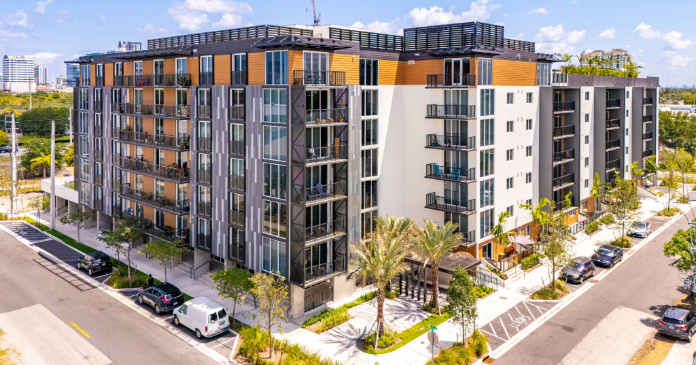Yield management tools adopted from successful applications in the hospitality and airline industries are among the latest integrations to capture the minds and bottom lines of apartment companies. These software programs help set rents by analyzing real-time market conditions and historical performance–such data as seasonal traffic rates, weighted competitor rents and recent demand–to recommend pricing for a given move-in, unit or lease term.
But, no matter how a community’s units are priced, how well managed, maintained or well-built it might be or how quickly a company responds to skips and other bad debt, the ability of an apartment property to generate revenue is in direct proportion to the quality of its renters.
“A lot of people think the worth of a property is in its sticks and bricks, but the true measure of an apartment property’s worth is the ability of the people who live there to pay rent. The only way to get true revenue management growth long-term is to increase the quality of the renter,” said Nevel DeHart, executive vice president of First Advantage SafeRent Inc., which has been providing resident screening and risk management services to the multifamily industry for more than 20 years.
The company is the creator of RegistrySCOREX and the Multifamily Applicant Risk (MAR) Index–scoring models that measure renters’ credit risk. “These mathematical models set the determining factors and the relationship between them by narrowing the field to the variables that statistically are most important when predicting whether an applicant will pay the rent. We start out with about 350 variables and get down to 15 that are really predictive by taking them through multiple regression analysis, comparing one to the other and one to groupings and so forth. It’s the same statistically derived methodology that many credit granting companies use to predict consumer behavior, one example being FICO for credit card approval. But we have a component no one else has–20 years of collected landlord tenant records,” said DeHart.
He claims First Advantage SafeRent has about 40 percent market share in the country, meaning four out of every ten rental applications run through the company’s system–roughly seven million transactions a year.
DeHart believes the statistical method used by First Advantage SafeRent ensures a better prediction rate than the scorecard method used by some of his competitors. “The scorecard is an amalgamation of rules that someone creates–for instance, rent-to-income ratio and length of time at current residence–and then assigns a rating to each based on the subjective experience of someone in the organization.
“But what we know is that people’s judgments are faulty. Nothing beats pure math,” he said.
It’s not only the opportunity to raise rents that’s important, but the ability of the rental pool to absorb those rent increases. First Advantage SafeRent’s MAR Index, which the company started publishing about 18 months ago, can look over a property, a region or a state and determine if overall scores are going up or down. The MAR Index goes up at a community or in a geographic area when the pool of potential renters in that area is more qualified, or renters have higher scores.
“The premise is, if you want to raise rents and the ability of your people to pay rent as a group, or as a geography, is declining in renter quality, it will be much harder to push rents and keep those people as renters,” said DeHart.
When occupancy fluctuates because of market conditions or changing resident demographics, managers must adjust the amount of risk they are willing to accept from their applicants. But that practice can be tricky, especially without a scientifically based methodology, says DeHart. With a statistical model, owners can quantify risk levels and adjust it incrementally, while those who use rules-based systems must re-evaluate their entire screening criteria with each market shift, never knowing which adjustments are correct.
“The perfect time to raise acceptance scores, which in turn raises renter quality, is when occupancy is high,” said DeHart. But that doesn’t mean it is prudent to increase risk when vacancies are high.
“Most companies make mistakes at the two ends, when vacancies are high and when they are low. They increase risk at the bottom and lose opportunities to increase renter quality at the top when they are in a good market,” he said, adding that may be even more prevalent with today’s turmoil in the marketplace. DeHart believes a company is much better off leaving a unit vacant for a period of time and working to get the right applicant versus renting to a high-risk applicant.
“One of our clients–one of the nation’s largest REITs–refuses to go below a certain score, even when vacancies are high. And, when occupancy gets above 90 percent, they begin raising acceptance scores because they want to get the best of the best with the next group in.
“But there are companies out there who thought the current defaulted mortgage situation was going to create a windfall in terms of the number of former homeowners returning to the rental pool. They thought, ‘These people used to be good renters, therefore they will be good renters now.’ But that’s just not true. People who received subprime mortgages already were judged to be subprime. Then they defaulted and trashed their credit even further. When they come back to rent, they aren’t going to look the same as when they left to buy a home. Our research shows that these people on average have a 24 percent lower score,” said DeHart.
AIMCO, which has been a client of First Advantage SafeRent for ten years, reports resident quality in its quarterly earnings calls. In the REIT’s Q1 2008 earnings call, Chief Property Operations Officer Jeffrey Adler noted that the impact of troubles in the for-sale housing industry on apartment rent, resident quality and demand seems to be working to the REIT’s advantage. “We are seeing our applicant quality scores increasing throughout the country and the percentage of applicants we approved in our consistent standards is up versus the prior year. We have also seen a reduction in the early termination rate and a sharp reduction in move-outs to home and condo purchases. Our bad debt is stable and average customer duration continues to increase from 18 to 19 months.”
Tenant quality plays a key role in every aspect of the apartment business, from initial lease-up and stabilization, rent and occupancy to acquisition underwriting. Being able to quantify renters’ ability to pay rent at the property level helps an acquisition team analyze the creditworthiness of the target demographic in a region and the value of a community.
First Advantage SafeRent’s Property Performance Analytics (PPA) tool predicts resident quality, rents, deposits, and occupancy trends to derive a bench marked risk analysis and project future performance.
“Sellers sometimes fill up a property quickly by renting to less qualified tenants to make the property look better to potential buyers,” said De Hart. PPA will determine this scenario and also reveal if the property’s current residents are capable of paying higher rents.
De Hart believes renter quality will become a more important factor to Wall Street analysts who look at the public REITs that own and manage apartments. “They are just starting to look at renter quality, because in the past they haven’t had a tool to do so. But if a company consistently raises renter quality every year and you can see it, you know management is doing something right, because it’s a leading indicator for how you can also raise rents,” said DeHart.
Earlier this year, First Advantage SafeRent released MarketVISION, an application that analyzes site-specific market data to weigh the merits of a potential development or rehabilitation opportunity in a given market. The model analyzes resident data pulled from a database of about 40,000 properties and is updated daily, using rent income, traffic quality, and resident demographics to paint a picture of a development opportunity in a given neighborhood. Comparable properties are analyzed to give a snapshot of rents and how they’re distributed in the sub-market.
The company also is in the process of rolling out a new scoring model called Registry ScorePLUS, which will be the next generation of RegistrySCOREX. “We created Scorex in the late 1990s, and when you create a model you need to periodically go back and challenge how it could be improved. Usually two things happen–you will get access to new, differentiated and predictive data that combined with improvements in model-building technology, will give you a better tool. The lift in results from use of the new model is 18 to 32 percent,” said De Hart.












